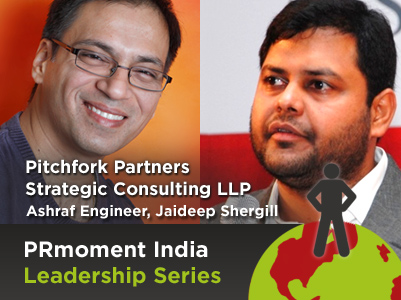Why strategic developmental communication can offer double digit PR growth opportunity
Opinion
 As businesses rework strategies to focus on the communities they work in as well as on major national challenges, communication is becoming a critical enabling tool. Note, I wrote enabling, not awareness or opinion formation or any of the business objectives communication is commonly deployed for.
As businesses rework strategies to focus on the communities they work in as well as on major national challenges, communication is becoming a critical enabling tool. Note, I wrote enabling, not awareness or opinion formation or any of the business objectives communication is commonly deployed for.
With sustainable development going from buzzword to business imperative, communication for it is fast becoming an established offering within agencies. More than any other form of communication, it puts people at the strategic centre using the tools familiar to all of us – conversations, insights, digital and traditional media, events.
This is an opportunity for agencies since they can apply the lessons they have learned over the decades to sustainability initiatives undertaken by corporations and even the government. These span varied fields, from water to agriculture and housing to health.
Donors, too, are no longer happy with just good execution of the concept. They want to see community involvement and a robust dialogue with it.
For those implementing the initiatives, communication serves not just as the information pathway but also as a views exchange and the foundation for stakeholder buy-in. It can serve to build capacity and strengthen cooperation between all the groups concerned. Think of it as the iron rods and meshes around which plaster is moulded to create a structure. They remain unseen but provide the structure with form, stability and longevity.
One great example of this the ‘Eureka Forbes Jaldaan’ initiative through which safe drinking water is supplied to communities badly in need of it. This is done such that the plants become self-sustaining even as they create jobs and raise the overall health of the community, leading to better school attendance and higher household incomes. The communication around this is centred on making a difference to a critical national need: better health through cleaner water. This has made the initiative relevant to a larger audience, including talent looking to make an impact beyond the jobs they hold.
For results like this, agencies must be able to offer customised and multi-disciplinary services in an integrated manner.
For us, good communication around sustainability initiatives involves:
- Recognition as a strategic management tool: Like with any campaign, you need to understand your audience so that you can make the initiative relevant to it. This is necessary to build consensus – important because sustainability initiatives tend to be complex and depend greatly on stakeholders’ understanding of the objectives and their active participation. Information is important, dialogue even more so.
- Inclusiveness: Good sustainability campaigns take on board views and concerns from all involved – from beneficiaries to the government. Top-down planning fails way too often and needs to be balanced with a rigorous ground-up approach for it is communities and individual beneficiaries that are the repositories of information on ground realities, problems and local priorities. Hence, no campaign can hope to succeed without feedback mechanisms, dialogue and awareness.
- Effective rollout: Apart from constant conversations, you will need empathy – as much a requisite for success as any. You will need it to resolve disputes, unravel logjams and, most importantly, to establish trust. Therefore, many agencies prefer to roll out their strategy in a phased manner, focusing on participation first, gauging the response, allocating resources accordingly, and then scaling up.
No agency or corporation can hope for success on the above fronts without transparent, open channels of communication. This is fundamental to sustainable development and lays the basis for scale, governance, accountability and effectiveness. All stakeholders must understand this.
This is an urgent objective before us as communicators because strategic communication is becoming an important instrument of policymaking itself. It has a wide-ranging impact on various aspects, from participation to monitoring and assessment.
For us, as an industry, this is an opportunity and a challenge. It’s difficult to put a figure to the growth we can expect from such a practice, but it’s safe to assume it will be in the double digits for at least a decade. We have the tools and the experience to make the most of it. The onus now is on agencies’ leaderships to aggressively pitch to such clients and to make the investments required to service them.
Ashraf Engineer is principal consultant and Jaideep Shergill, co-founder of Pitchfork Partners Strategic Consulting LLP
If you enjoyed this article, you can subscribe for free to our weekly event and subscriber alerts.
Featured

PR professionals share their views on journalists publicly calling them out on story pitches

Auto blogger renders unconditional apology to Value 360 for defamatory posts

Hottest Indian startups of 2020, Paytm, Dreams 11 lead the charge: Wizikey Report




